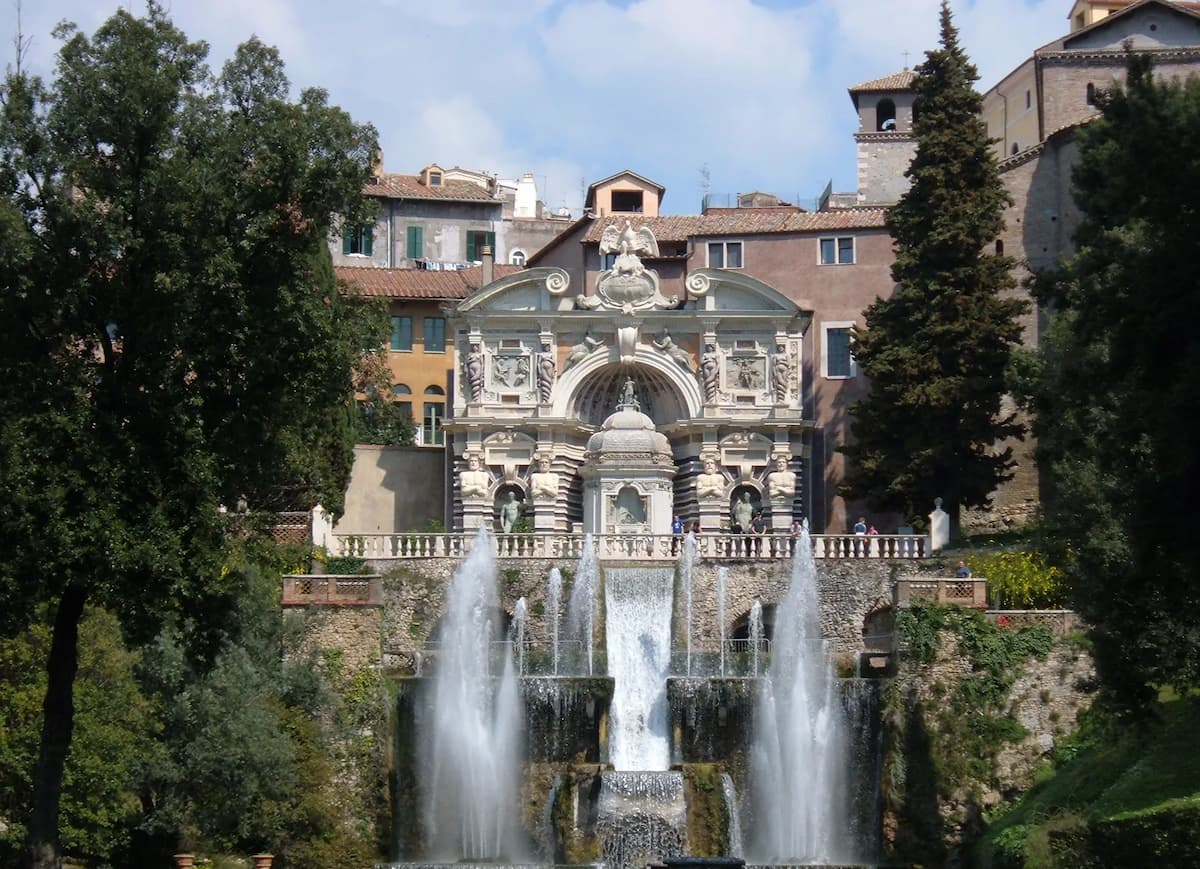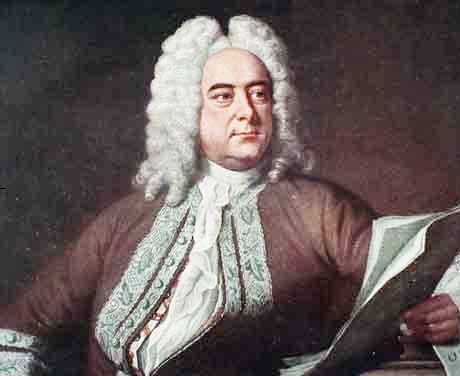It's all about the classical music composers and their works from the last 400 years and much more about music. Hier erfahren Sie alles über die klassischen Komponisten und ihre Meisterwerke der letzten vierhundert Jahre und vieles mehr über Klassische Musik.
Total Pageviews
Friday, April 12, 2024
Ein Morgen, ein Mittag und ein Abend in Wien - Franz von Suppé
WOMEN AND THE PIANO: A History in 50 Lives - Susan Tomes
by Frances Wilson, Interlude

Susan Tomes
Focusing on 50 women pianists – some well-known (Louise Farrenc, Fanny Mendelssohn, Nadia Boulanger, Tatiana Nikolayeva, for example), others less so, or only recently discovered – Tomes traces the lives and music-making of these women across the piano’s history, from the development of the piano in the 18th century to the present day.
As Tomes points out in her introduction, the piano is “an instrument that anyone can play, irrespective of gender”, yet until fairly recently, women pianists and composer-pianists were overlooked, under-represented in concert programmes and recordings, and generally consigned to the background in classical music history.
In some ways, the reasons for this are simple: women pianists lacked access to formal music training, were excluded from performance opportunities, and were even at a disadvantage to men due to the size of the instrument, the piano’s keys being designed for men’s typically larger hands. Additionally, women often had significant obligations to the home and family. And yet, despite these limitations, women continued to play, perform, and compose their own music.
Pioneers, in a number of ways, women pianists carved their own paths within a male-dominated profession. They travelled independently and helped to shape the modern piano concert as we know it today, including playing from memory (Clara Schumann), performing cycles of complete works (Wanda Landoswka/Bach’s Goldberg Variations), premiering new works and reviving historical works, bringing lesser-known and rare repertoire into concert programmes and recordings, and commissioning new music. They were involved in recording, broadcasting, presenting TV programmes about music, creating educational initiatives, devising concert series….and much more – all against a background of, at best half-hearted support, at worst, antagonism, resentment, and open sexism.

These enterprising women, 50 of whom are presented in this book, helped to expand and diversify the profession, gradually debunking the notion that the male approach to a career as a concert pianist was not the only way. These women were not imitators of male pianists but artists in their own right, with their own musical integrity, authority, and identity.
This highly readable, meticulously researched, and elegantly crafted book takes a chronological approach, beginning with French keyboard player Anne-Louise Boyvin d’Hardancourt Brillon de Jouy and ending with Nina Simone, jazz pianist, singer and civil rights activist. For each woman pianist featured, the author gives biographical details, notes their significant performances, recordings or compositions, and demonstrates how they have each contributed to the world of the piano.
The introductory chapters explore some of the reasons why women were sidelined, including social mores and prejudices, and how men became ascendent in the profession. The closing chapters examine where we are today with regard to female musicians, including the effect of equal rights legislation, the rise of piano competitions, shifting attitudes within the profession and audience perceptions, and the influence of teachers. For this section of the book, Susan Tomes spoke to a number of female pianists working today to reveal some surprising insights, and the barriers and limitations which women still face today in a highly competitive global profession.
At a time when the current discourse in classical music – and indeed in society in general – is focused on equality and inclusion, this book is an important, valuable contribution to the debate and a rich celebration of the essential role of women in the history of classical music and the piano in particular.
Playlist: Water Games
by Frances Wilson, Interlude

Shipwreck
Each is equally apt: in this piece Ravel brilliantly evokes “the splashing of water and by the musical sounds of fountains, cascades and rivulets” (Ravel) through shimmering figurations, cascading arpeggios and other fluid textures. It’s a masterpiece of Impressionism and was the well-spring for other water-inspired piano music by Ravel, namely Une barque sur l’océan from Miroirs and Ondine from Gaspard de la Nuit.

Fountain in Villa d’Este, Tivoli
But the forerunner of these pieces was undoubtedly Franz Liszt’s Les jeux d’eau à la Villa d’Este, which, like Jeux d’eau, evokes the sparkling play of fountains and the fluidity and brilliance of water. The Villa d’Este boasts an extraordinary system of fountains, with some fifty-one fountains and nymphaeums, 398 spouts, 364 water jets, 64 waterfalls, and 220 basins, fed by 875 metres of canals, channels and cascades, and all working entirely by the force of gravity, without pumps.

Reflections on water
Debussy was also a master of depicting water in music. Reflets dans l’eau (Reflections in the Water). Here Debussy imitates not just the sounds of water – droplets and burbles, splashes and raindrops – but also reflections, the pictures that float upon the surface.
n. The Lone Wreck, from The Tides by English composer William Baines, is a dramatic tone poem which paints a haunting picture of an abandoned ship deep in the ocean, complete with the calls of sea birds.

Night gondola in Venice, Italy
The Barcarolle, or “boat song”, inspired by the songs of Venetian gondoliers, seeks to portray the rocking motion of the sea and the rise and fall of waves. Chopin’s Barcarolle is perhaps the most famous work in this genre. Mendelssohn’s Venetian Gondolier’s Song in f-sharp minor from his Songs Without Words is dark and atmospheric, suggesting nighttime on the Venetian lagoon.
Liszt was also adept at portraying the motion of the ocean. In his Legende No. 2, St. Francis of Paola walking on the waves, the waters roll and bubble beneath the saint’s feet as he crosses the Straits of Messina.
Meanwhile, Benjamin Britten transports us to more serene waters in Sailing from his Holiday Diary suite. The wind gets up in the middle section, tossing the boat about, before calm is restored.
Transcending Tunes of Light and Shade Handel: Messiah
by Frances Wilson, Interlude

George Frideric Handel © portlandhandelsociety.org
The reasons for this tradition are somewhat apocryphal: one version is that at the first London performance in 1743, the audience “together with the King”, were so moved by the ‘Hallelujah’ Chorus that they spontaneously rose to their feet. An alternative explanation is that King George II was so tone-deaf that he thought the performance had finished, and the orchestra was playing the National Anthem: once the King stood, everyone present was obliged to stand too. Whatever the reason, there is something really special about standing for such an uplifting and triumphant piece of music.
For me ‘Messiah’ will forever be associated with the beginning of the Christmas season. When I was at school, it formed an integral part of the concert which ended the Autumn term, along with the service of nine lessons and carols at the church next door to my school. I must have sung Handel’s ‘Messiah’ at least 10 times, for the tradition of performing it at Christmas continued when I joined my university choir.
Background
‘Messiah’ was composed in 1741, with a text compiled by Charles Jennens from the King James Bible and the version of the Psalms included with the Book of Common Prayer. It was first performed in Dublin on 13 April 1742 and received its London premiere nearly a year later. Initially it received a modest public reception, despite Handel’s established reputation in England, where he had lived since 1712, but gradually the oratorio gained in popularity and it is now one of the best-known, much-loved and most frequently performed choral works in Western music.
The Story
The work is organised in three sections: Part 1 tells the story of the birth of Christ and includes all the familiar elements of the Christmas story. Part 2 is concerned with Christ’s passion and death, his resurrection and ascension, and ends with the joyous ‘Hallelujah’ chorus. It is this aspect of the work which makes it just as applicable for performance at Easter as well as at Christmas (in fact, its premiere in Dublin took place 19 days after Easter 1742). Part 3 returns to the theme of resurrection and represents the real core of the work as Christ’s resurrection is connected to our own redemption and sense of hope, beautifully affirmed in one of the work’s most famous arias, ‘I Know that My Redeemer Liveth’. And I suppose the best thing about ‘Messiah’ really is all the memorable ‘tunes’ – from ‘Ev’ry Valley Shall be Exalted’ to ‘The Trumpet Shall Sound’, ‘I Know My Redeemer Liveth’ to the charming duet between tenor and alto ‘O Death Where is Thy Sting’. Then there are the choruses: ‘And the Glory of the Lord’, ‘All We Like Sheep’, ‘For Unto Us a Child is Born, ‘Hallelujah’, and the wonderful fugue of the final chorus. In between all this are some beautiful solos, recitatives, which serve to move the narrative forward, and delightful orchestral interludes.
Handel brings the text to life with light and shade, storms and sunshine, fugue and counterpoint, and a huge variety of textures and “word painting”, the technique of having the melody mimic the literal meaning of the libretto. Because of the skilful way in which Handel organises the material, and the universal, redemptive message of the text, Messiah remains a work which is uplifting and life-affirming, regardless of how it is performed.
Thursday, April 11, 2024
Gheorghe Zamfir - The Lonely Shepherd
John Paul Young - Love Is In The Air (Strictly Ballroom Music Video)
Wednesday, April 10, 2024
Schumann: Klavierkonzert ∙ hr-Sinfonieorchester ∙ Khatia Buniatishvili ∙...
Luigi Cherubini: "Requiem in do minore"
What ‘Miss Saigon’ songs are on your playlist?
Sun and Moon is a duet between Chris and Kim, which reveals the stark contrast between the star-crossed lovers, race- and social status-wise, but love wins. Photo courtesy of GMG Productions
Jerry Donato - The Philippine Star
MANILA, Philippines — Aside from the universal themes embedded in the narrative and recognizable characters, musicals are a hit because of their well-crafted songs. They give the audience a sneak peek at characters’ aspirations, intentions, and personalities — and can be seen as devices that make the storytelling unfold and move.
These songs leave a lasting impression on the audience and make them experience Last Song Syndrome (LSS). They usually become part of their everyday playlists.
An example of such a list may comprise the following tunes from musicals: Bring Him Home (by Jean Valjean), I Dreamed a Dream (Fantine), and On My Own (Eponine) from “Les Misérables;” Memory (Grizabella) from “Cats;” I Know Him So Well (Florence and Svetlana) from “Chess;” Don’t Cry for Me Argentina (Eva Peron) from “Evita;” Maria (Tony), Tonight (Tony and Maria) and Somewhere from “West Side Story;” What I Did For Love (Diana and the company) from “A Chorus Line;” Loving You (Fosca) from “Passion;” and Only He-Only You (Pearl and Rusty) and Starlight Express (Rusty) from “Starlight Express.”
Songs, definitely, from “Miss Saigon,” which is now playing at The Theatre at Solaire until May 12, will make it to the list.
Its latest Manila edition features Abigail Adriano and Nigel Huckle as the Vietnamese young woman Kim and the American G.I. Chris, respectively, with Seann Miley Moore as the French-Vietnamese bar owner The Engineer and Laurence Mossman as Kim’s cousin Thuy.
Kiara Dario, Lewis Francis, and Sarah Morrison take on the roles of bar girl Gigi, Chris’ best friend John, and Chris’ wife Ellen.
If one is an avid follower of the Alain Boublil, Claude-Michel Schonberg, and Cameron Mackintosh musical, one knows each musical number from Act 1 to Act 2 — and from Saigon-Ho Chi Minh City to Atlanta-Bangkok by heart.
Yes, we love them all, but what could a Top 6 list of “Miss Saigon” songs look like to someone who is enamored by the thoughts of “love knows no bounds,” selfless love, and living a new life.
First on the list is Sun and Moon, a duet between Chris and Kim. The lyrics reveal the stark contrast between star-crossed lovers in terms of cultural background, race, and social status, but love wins. It comes in unexpected places and situations, like being amidst of war.
Kim sets the tone by singing, “You are sunlight and I moon/ Joined by the gods of fortune/ Midnight and high noon/ Sharing the sky/ We have been blessed, you and I.”
For his part, Chris shares a piece of his mind saying, “You are here like a mystery/ I’m from a world that’s so different/ From all that you are/ How in the light of one night/ Did we come so far?”
Before he has come to such a realization, Chris seems to have grappled with the thought of loving Kim in Why God Why? It’s a solo musical number that captures the beauty of soliloquy in any dramatic presentation in which a character is attuned to his or her emotions and thoughts.
What seals the love Chris and Kim have for each other and the decision for them to move forward, despite the challenging plight they are in, is told in The Last Night of the World. They are hopeful that tomorrow will bring them change, like as he puts it, “On the other side of the earth/ There’s a place where life still has worth/ I will take you.”
Then, she reciprocates it with utter happiness in her voice, “I’ll go with you.”
The Movie in My Mind features Kim and Gigi with fellow bar girls, Dominique, Fifi, Yvonne, Mimi, and Yvette, who wish to flee their current plight.
To borrow the words of Kim, one could say that the “gods of fortune” have played significantly in their meeting and eventual romance, but maybe the gods have other plans for the couple to learn what love is.
Three years have passed (from 1975 to 1978), and Kim remains faithful to Chris, who is unaware that he and she have a son. With the help of John, Chris will meet Tam and Kim. The song, I’d Give My Life for You, depicts Kim’s evolving perspective on love, from the romantic to the selfless one, brought about by motherhood and parenthood.
She may have failed in her personal relationship, but she would love to succeed in securing Tam’s future.
“I’ll give you a million things I’ll never own/ I’ll give you a world to conquer when you’re grown,” sings Kim, and firmly assures her son with this line: “As long as you can have your chance, I swear I’d give my life for you.”
Aside from the interracial love story, “Miss Saigon” may be viewed as a tale about dreaming and fulfilling one’s aspirations, like enjoying a cheerful life or making it big somewhere. Regardless of the characters’ contexts, The Movie in My Mind and The American Dream speak of it, and they take the last two spots on the list.
These musical numbers are great and welcome additions to one’s playlist, but watching actors act and sing them on stage live promises an experience like no other.
